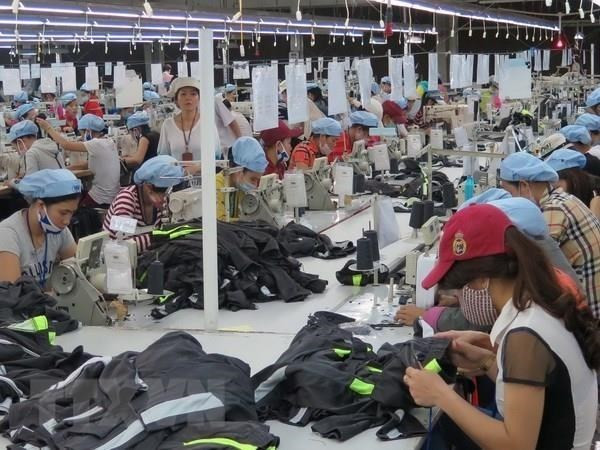Cam was speaking at a seminar on "Promoting circularity inVietnamese textiles" on August 26.
He said a booming textile industry has become a thing of the past.The industry has shifted its focus from fast growth to sustainable growth. Itis expected to grow by around 6% from 2022 to 2030 and achieve circularitybetween 2030 to 2045.
He also underscored VITAS's PPP (Profit-People-Planet) as awell-suited model for textile firms to go green. Under the model, firms arerequired to operate profitably and, at the same time, improve workers' livingconditions and embrace green production.
The general secretary urged textile firms to keep themselveswell-informed about circularity to not lag behind on the global green path. Healso called on firms to weigh the costs and benefits of green transition todevelop the best strategies for themselves, avoiding green-at-all-costnarratives.
Saskia Anders, director of the GIZ Fabric Asia Programme, revealedthat the European Commission passed its strategy for sustainable and circulartextiles this year.
Up to 16 regulations and other policy measures are being plannedto make textile products that enter the European market more long-lasting,repairable, reusable and recyclable until 2030.
"There is a large interdependence between the first stages ofproduct development and its end-of-life. Hence, the effort needs to becollaborative and the responsibility needs to be shared," she said.
Nguyen The Chinh, former head of the Institute of Strategy andPolicy on Natural Resources and Environment, defined circular economy as aneconomic model that allows efficient use of materials, longer product life spans,lower production wastes and less environmental impacts.
He said the Government always puts circularity high on its agendaand aims to encourage the reuse and recycling of production waste. He also saidVietnamese firms could learn from German firms in this regard to operate morecircularly.
"In Germany, many firms reclaim CO2 from their factoryemissions to sell it as input to other firms," he said.
Cao Minh Ngoc, director of the RTS Vietnam Technology Solutionsand Resources, underscored four factors that are posing a serious threat towater security in Vietnam, which are climate change, rising sea levels, droughtand flooding.
An average of 30,000 cubic metres of used water go through atreatment plant and get released into the environment daily in industrialparks. However, he said the practice of pumping treated water into theenvironment is a waste of resources.
"The treated water could be pumped into other factories forreuse as long as the water meets the 01/2018/BYT standard issued by the Ministryof Health," he said.
He also asserted that firms engaging in treated water reuse wouldbe granted Green Certificates, which help them penetrate international marketsmore easily.
Tran Hoang Phu Xuan, director of the fashion firm Faslink,asserted that two million cups of coffee are consumed every day and thedecomposition of the untreated coffee grounds releases a huge volume ofmethane, a greenhouse gas.
Her firm has embraced circularity by recycling coffee grounds intocoffee-derived yarns, which are later used to make T-shirts. The yarns providefive times more UV protection and three times more odour control than cotton./.





























